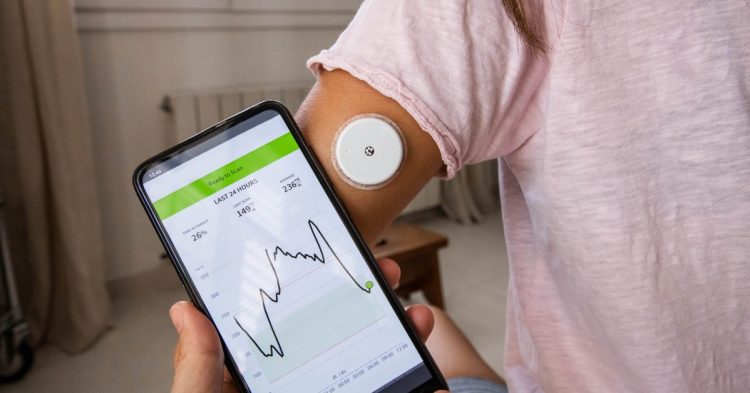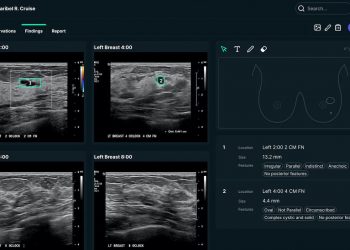If only there existed a simple set of rules for managing blood sugar when you have Type 2 diabetes—it would be the most-requested pamphlet in a doctor’s office. Instead, as many people find, there’s no one-size-fits-all solution for the millions of Americans with the condition. It takes time and effort to discover what works best, and the right combination will differ for everyone.
Determining what type of medication and which lifestyle factors will be most effective for managing blood sugar could take years. One way to speed up the discovery? Learn from others who are living with the condition. Here, seven people with diabetes share the most important insights they’ve gleaned about managing their blood sugar on a day-to-day basis.
Pay close attention to food and medication effects
When Agnes Czuchlewski, 68, was diagnosed with Type 2 diabetes more than 20 years ago, her first thought was that she had to implement iron-clad restrictions on her eating and would never have a sugary treat again. That didn’t last long.
“You can become obsessed with what you ‘should’ be doing, but that’s exhausting,” she says. “Instead, it’s much better to educate yourself about how your choices affect you. For example, have that candy bar, but look at what happens to your blood sugar—how much it goes up and how quickly—when you do. Then you can implement controls based on what you need.”
Paying attention to how medication affects you is also important. Czuchlewski’s initial medication lowered her blood sugar so dramatically that she became hypoglycemic at night, a dangerous situation in which blood sugar drops too low. At one point, she feared she wouldn’t wake up. Tracking the effect over several nights provided her with the data she needed for another conversation with her doctor, and for a medication switch.
“Learn about your body, and be more aware of how medication is affecting your numbers, how each food choice is affecting you,” she says. “When I was diagnosed, four other people in my work group were diagnosed within six months of each other. Each one of us reacts to their meds and to different foods in unique ways. Don’t assume you’ll react a certain way just because someone else with diabetes does.”
Without truly observing how each affects your body in specific ways—a sudden wave of fatigue, for instance, or symptoms like increased thirst or weakness—it’s difficult to understand the subtle and overt ways that blood sugar may be affecting you overall. Taking time to slow down and build body awareness can go a long way toward managing blood sugar more effectively.
Read More: People With Diabetes Are More Vulnerable to Heart Disease. How to Reduce the Risk
Consider a continuous glucose monitor
Tim Jones, 56, has lived with Type 1 diabetes for 35 years—and the greatest lesson he’s learned is that blood-sugar regulation can change over time. It’s not just a matter of calculating how carbohydrates affect insulin, he says. All kinds of factors, including exercise and fat intake, create variations that need to be monitored, especially since they can change how much insulin Jones needs to take.
Switching from an insulin pump to a hybrid closed-loop artificial pancreas system with a continuous glucose monitor (CGM) has been a game-changer. CGMs are small wearable devices that track blood-sugar levels throughout the day. Even though Jones still needs to count carbs and make adjustments for fat content, the continuous glucose monitor allows him to tighten control without worrying about his levels dropping too low.
“Diabetes is something I deal with every hour of every day. It’s relentless,” he says. “It’s nice to have a little something in my pocket that takes over some of the attention, especially when I’m sleeping. It’s a relief. I’ve never been in better control than I am right now, and I’m expecting technology to get better.”
Using a CGM may be particularly useful for those who have found traditional manual methods of monitoring blood sugar to be challenging. For example, Max Androsiuk, 34, tried managing his blood sugar for five years after his Type 1 diabetes diagnosis, but found it so difficult that he had to quit playing basketball with his friends—a decision that crushed him.
“I just couldn’t get my blood sugar under control enough to play,” he recalls. “It was made worse by being nervous when I’d start to get active, which makes blood sugar increase.” Then, two years ago, he started wearing a CGM and can check his blood sugar level with a quick glance at an app on his smartphone. That gave him the confidence to return to the sport he loves. “I can easily control my blood sugar by applying measures I know will work if I see my numbers go up or down,” he says.
Establish a routine
With Type 2 diabetes, you’re not just managing blood sugar: you’re also dealing with potential overwhelm, says Emilee Harringshaw, 28. Factors like food, sleep, stress, work, exercise, and medication can feel like a juggling act. Just getting a high reading might send her into a tailspin: Should she go for a walk or a run? Drink some water? Contact her doctor? What helps keep her steady is having a regular routine, so she can be less reactionary when fluctuations happen.
“My daily regimen is reliable yet modifiable,” Harringshaw says. It involves reviewing her blood sugar at specific times, being mindful of the timing of her medications, focusing on stress-management practices, and doing food preparation in advance so she knows the carbs, protein, and fat content in each meal.
“Before I formed habits that made me more aware of managing blood sugar, I wasn’t able to identify trends, and that made me feel out of control,” she says. “Getting into a regular pattern of tracking, exercise, and preparation makes me feel physically and mentally better.”
That includes a solid sleep routine. According to the U.S. Centers for Disease Control and Prevention (CDC), getting less than seven hours of sleep per night can make diabetes harder to manage. Shorter sleep can also make you hungrier the next day and delay your fullness signals, increasing your risk of overeating—affecting your blood sugar along the way.
Keep a consistent exercise schedule
Jenny Lyn Belleza, 35, says getting enough physical activity is a cornerstone of how she manages her Type 2 diabetes.
“A big part of managing blood sugar is exercising regularly, and I try to stay on top of my fitness by going to the gym a few times a week and doing some sort of cardio or strength training,” she says. “I’ve found this helps keep my blood sugar in check, and prevents any spikes or dips throughout the day.”
According to the CDC, being active makes the body more sensitive to insulin, and not only helps control blood sugar but also lowers the risk of heart disease and nerve damage related to the condition. The American Diabetes Association adds that physical activity effects vary depending on how long you’re active and the intensity of your workout, but in general, exercise can lower blood sugar for 24 hours or more.
Because of that, it’s important to check in with your doctor or diabetes educator when putting together an exercise plan. If you’re taking insulin, for example, you may need to adjust the dose before exercise to lower your risk of hypoglycemia. Much like tracking how food affects your blood sugar hour by hour, keep on top of blood-sugar changes before, during, and after activity to understand how working out is affecting you.
Work with a care team
For years, Melissa Almeida, 48, managed her Type 2 diabetes by herself, but struggled with nearly every aspect, from medication timing to food choices—in part because she was just a teenager when she was first diagnosed.
“I felt overwhelmed, and as a result, I was only taking one of three prescribed medications,” she says. “I wasn’t able to maintain a steady level of energy and it affected every aspect of my life, including being able to work. By the time I started taking enough medication, I was a full-time working mother and it was becoming increasingly difficult to find adequate time to manage my disease.”
Almeida turned to a diabetes care coach program from UMass Memorial Health, which helped her establish a plan to gradually improve her medication regimen. She also received counseling on the medications she was taking to learn how they affected her blood sugar and what side effects could occur. And she received detailed nutrition guidance that made a big difference for her blood sugar and energy levels.
“I felt like I was part of my own care team, helping to ensure my care plan and individual goals were being met,” she says. Plenty of research backs up this strategy. For example, a 2019 study in the International Journal of Environmental Research and Public Health looked at customized diabetes education programs and used CGMs to track results. Researchers found that those enrolled for just three months saw a significant difference in how well they managed their Type 2 diabetes.
Read More: The Link Between Type 2 Diabetes and Psychiatric Disorders
Keep mental health in mind
After 25 years as an endocrinology patient at Geisinger Health in Pennsylvania, Shivaun O’Donnell, 62, decided to get more involved not just with her own care, but with other patients, and became a diabetes educator for the health system 10 years ago. Along the way, she’s learned a wide array of strategies for blood-sugar management, and one she’s found personally meaningful is focusing on emotional wellbeing.
“This condition can come with depression and, honestly, life-stopping anxiety,” she says. For example, Stanford Medicine research found in 2021 that insulin resistance can double the risk for major depression, and bring symptoms like fatigue, sleep disturbance, and loss of appetite—all of which can impact blood-sugar regulation. As few as 25% of people with diabetes who have depression get diagnosed, according to the CDC.
“A large part of diabetes management is mental,” says O’Donnell. “You can do everything right, but if you’re feeling anxious or defeated, that might end up sabotaging your efforts.” That’s why it’s important to focus on tactics that will boost your brain as well as your body, such as getting adequate sleep, exercising, staying on top of medications and appointments, and making time for activities you find fun. “This isn’t just about your blood sugar,” O’Donnell says. “It’s about learning to love your life.”
More Must-Read Stories From TIME
Source by time.com











